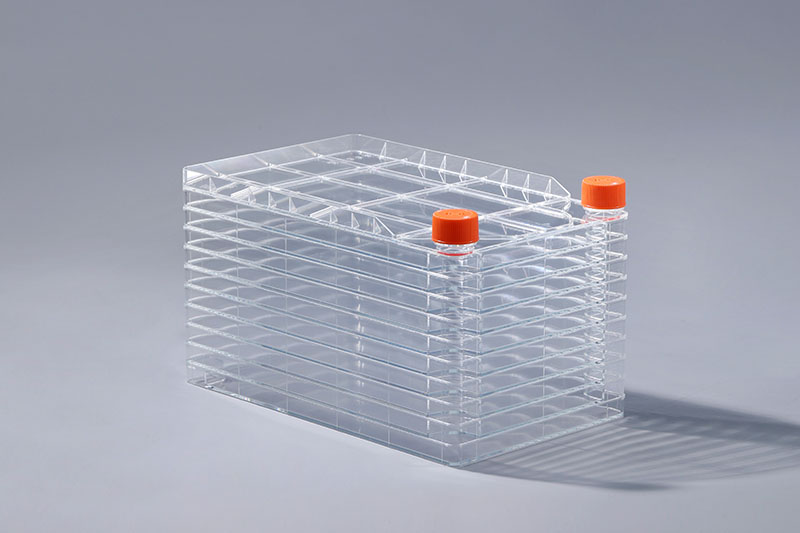Nếu sự nhiễm vi khuẩn xảy ra trong tế bào ở nhà máy tế bào thì nguồn sự nhiễm bẩn cần được phân tích theo tình hình cụ thể, và sau đó việc xử lý phải được thực hiện theo tình hình nhiễm bẩn. Nếu sự nhiễm bẩn rất nghiêm trọng, nên loại bỏ dịch nuôi cấy và nuôi cấy lại.là một loại vật tư tiêu hao được sử dụng rộng rãi trong nuôi cấy tế bào quy mô lớn. Tế bào là những sinh vật rất mỏng manh. Việc nuôi cấy tế bào trong ống nghiệm đòi hỏi một môi trường cụ thể, trong đó vô trùng là yêu cầu cơ bản. Quá trình nuôi cấy trong ống nghiệm, tế bào thiếu sự bảo vệ của hệ thống miễn dịch của cơ thể và mất khả năng chống lại vi sinh vật và giải độc các chất độc hại. Để đảm bảo tế bào có thể phát triển và sinh sản trong ống nghiệm, cần đảm bảo khu vực làm việc vô trùng, vệ sinh cá nhân tốt, thuốc thử và môi trường vô trùng, và xử lý vô trùng. các loại nấm. Mycoplasma không có độc tính gây chết người, có thể tồn tại lâu dài với tế bào và có tác dụng tiềm tàng đối với tế bào, nhưng nó có kích thước nhỏ và khó xác định. Nó có thể được phát hiện bằng phương pháp nhuộm màu đỏ địa y hoặc Hoechst33342. Vi khuẩn sinh sôi nhanh chóng, có thể nhân lên với số lượng lớn trong thời gian ngắn, đồng thời sản sinh ra độc tố để tiêu diệt tế bào. Có nhiều loại nấm có thể nhìn thấy bằng mắt thường, nổi trên bề mặt môi trường nuôi cấy, có thể ở dạng sợi, hình ống hoặc tua gai.
In vivo, the detoxification system and immune system can resist the invasion of microorganisms or other harmful substances, but in the process of in vitro culture, cells lack the protection of the body's immune system and lose the ability to defend against microorganisms and detoxify harmful substances. To ensure that cells can grow and reproduce in vitro, it is necessary to ensure a sterile work area, good personal hygiene, sterile reagents and media, and aseptic handling.
Common microbial contaminations in cell factory culture include mycoplasma, bacteria, and fungi. Mycoplasma has no lethal toxicity, can coexist with cells for a long time, and has potential effects on cells, but it is small in size and difficult to identify. It can be detected by means of lichen red or Hoechst33342 staining. Bacteria proliferate quickly, can multiply in a large amount in a short time, and produce toxins to kill cells. There are many kinds of fungi, which are visible to the naked eye, floating on the surface of the culture medium, and can be filamentous, tubular or dendritic.
If bacterial contamination occurs in the cells in the cell factory, the source of contamination should be analyzed according to the specific situation, and then the treatment should be carried out according to the contamination situation. If the contamination is very serious, it is recommended to discard the culture and re-cultivate it.
The FAI climbed 5.9 percent year-on-year in the first 11 months of 2018, quickening from the 5.7-percent growth in Jan-Oct, the National Bureau of Statistics (NBS) said Friday in an online statement.
The key indicator of investment, dubbed a major growth driver, hit the bottom in August and has since started to rebound steadily.
In the face of emerging economic challenges home and abroad, China has stepped up efforts to stabilize investment, in particular rolling out measures to motivate private investors and channel funds into infrastructure.
Friday's data showed private investment, accounting for more than 60 percent of the total FAI, expanded by a brisk 8.7 percent.
NBS spokesperson Mao Shengyong said funds into weak economic links registered rapid increases as investment in environmental protection and agriculture jumped 42 percent and 12.5 percent respectively, much faster than the average.
In breakdown, investment in high-tech and equipment manufacturing remained vigorous with 16.1-percent and 11.6-percent increases respectively in the first 11 months. Infrastructure investment gained 3.7 percent, staying flat. Investment in property development rose 9.7 percent, also unchanged.
 English
English



















































